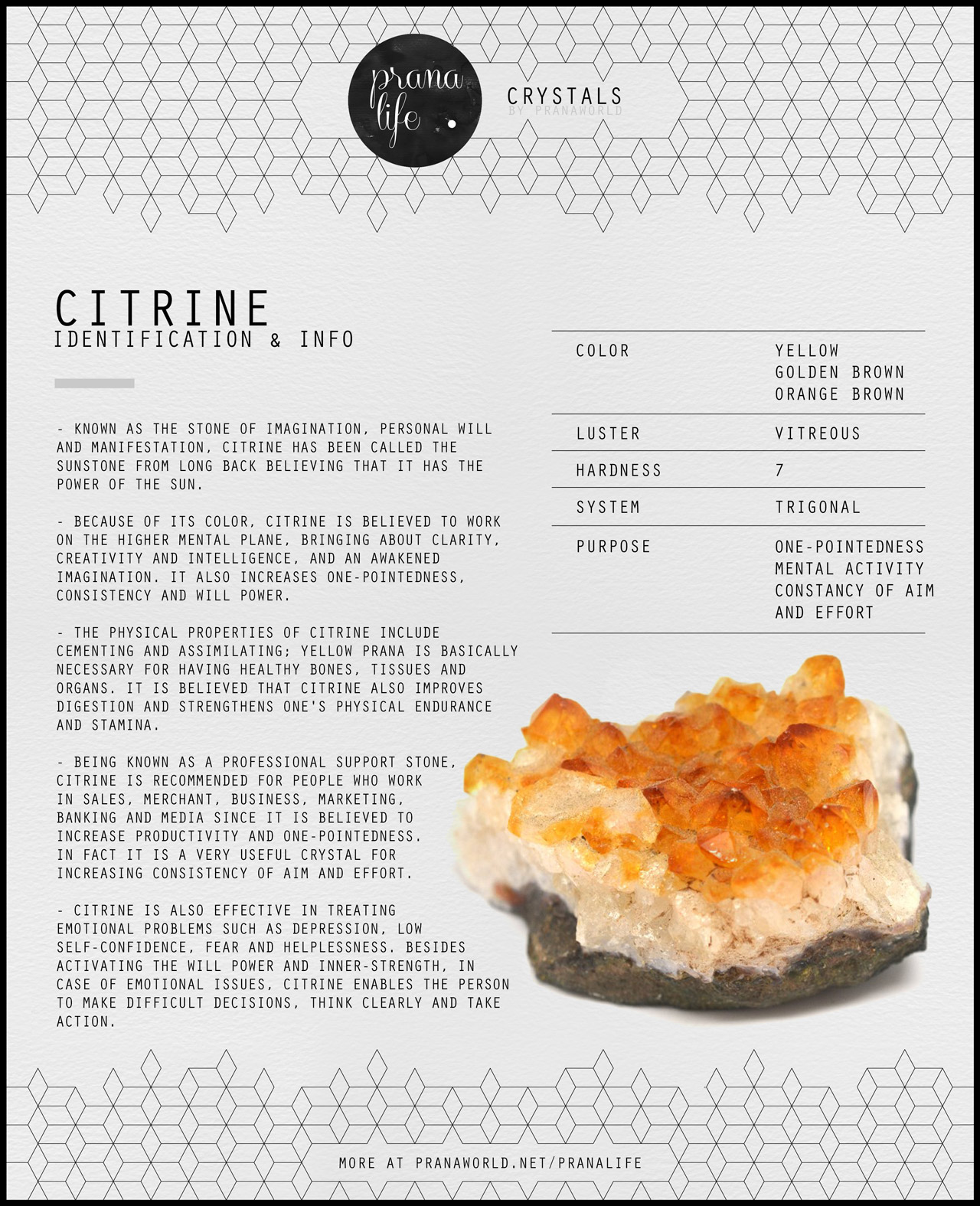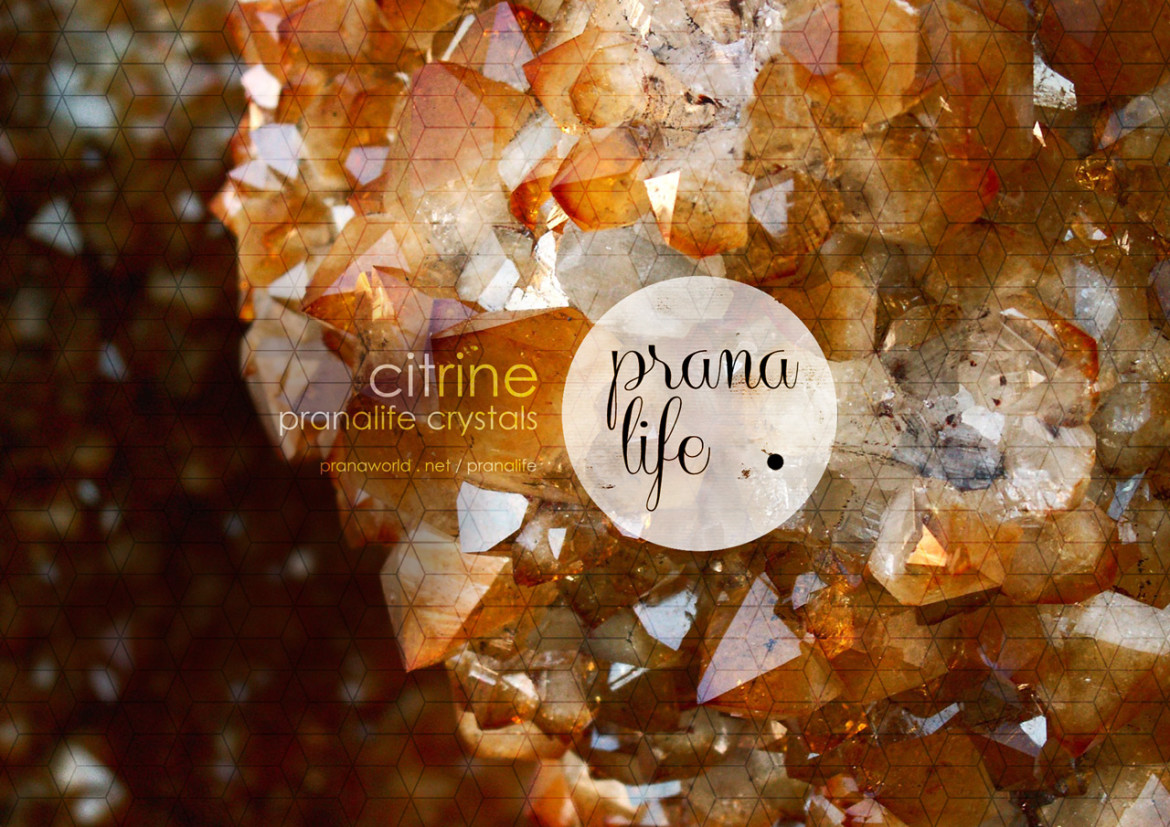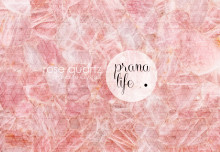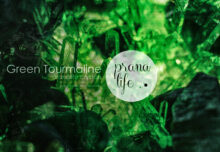Constancy and One Pointedness
Known as the stone of imagination, personal will and manifestation, citrine has been called the Sunstone from long back believing that it has the power of the Sun. It can be identified from its gentle yellow color and beautiful transparent crystal outlook.
In fact because of its color, citrine is believed to work on the higher mental plane, bringing about clarity, creativity and intelligence, and an awakened imagination. It also increases one-pointedness, consistency and will power.
The physical properties of citrine include cementing and assimilating; yellow Prana is basically necessary for having healthy bones, tissues and organs. It is believed that citrine also improves digestion and strengthens one’s physical endurance and stamina.
Throughout history, citrine was commonly called as the “Merchant’s Stone,” because of its ability to direct the will power and concentration and improve the condition of businesses. It is therefore good to both attract and maintain prosperity, abundance and success.
Citrine is in fact a transparent, yellow variety of Quartz and one of the most popular varieties of Quartz. Its name comes from a French word, Citron, meaning lemon. Its colors range from pale, golden yellow to almost brown. Currently however most of the citrine in the market is actually heat-treated Amethyst or Smoky Quartz. The color of most of the natural citrines is pale yellow while heat-treated ones usually appear in a deeper amber or orange-reddish shade.
Citrine was used as far back as 300 B.C as a gemstone in Greece. In ancient cultures, citrine was called the “Stone of the Mind.” They believed that placing a citrine on the forehead would increase psychic powers.
Being known as a professional support stone, citrine is recommended for people who work in sales, merchant, business, marketing, banking and media since it is believed to increase productivity and one-pointedness. In fact it is a very useful crystal for increasing constancy of aim and effort.
Citrine is also effective in treating emotional problems such as depression, low self-confidence, fear and helplessness. Besides activating the will power and inner-strength, in case of emotional issues, citrine enables the person to make difficult decisions, think clearly and take action.
Natural citrine therefore is an excellent help for those who are very sensitive and extremely vulnerable to outside energies and influences.
Currently most of the genuine citrine comes from Brazil, US, Russia and several African countries.

References
- Master Choa Kok Sui. (1998). Pranic Crystal Healing. Institute for Inner Studies Publishing Foundation.
- Hall, J. (2003). The Crystal Bible. Walking Stick Press.
- Citrine Meanings and Uses. (2009). Retrieved from Crystal Vaulats: http://www.crystalvaults.com/crystal-encyclopedia/citrine
- Robert Simmons, N. A. (2007). The Book of Stones: Who They Are & What They Teach. North Atlantic Books.
- Raphaell, K. (1985). Crystal Enlightenment: The Transforming Properties of Crystals and Healing Stones. Aurora Press.
- Mégemont, F. (2007). The Metaphysical Book of Gems and Crystals. Healing Arts Press.
- Gienger, M. (2005). Healing Crystals: The A – Z Guide to 430 Gemstones. Earthdancer Books.
- Fernie, W. T. (1987). Occult and Curative Powers of Precious Stones. Garber Communications.
2 Comments
-
too bad you seem not to know that the pictures you put for citrine is not a real citrine but heated amethyst. real citrine is not heated amethyst. do your own research please and change the picture.
-

Atma Namaste. Thank you so much for the observation. Actually, in the article we mentioned about the colour of citrine, stating that most of the citrine in the market is actually heat-treated Amethyst or Smoky Quartz. The color of most of the natural citrines is pale yellow while heat-treated ones usually appear in a deeper amber or orange-reddish shade. It is that picture of citrine that we have used in the article. :)
-
Leave a reply
You must be logged in to post a comment.






